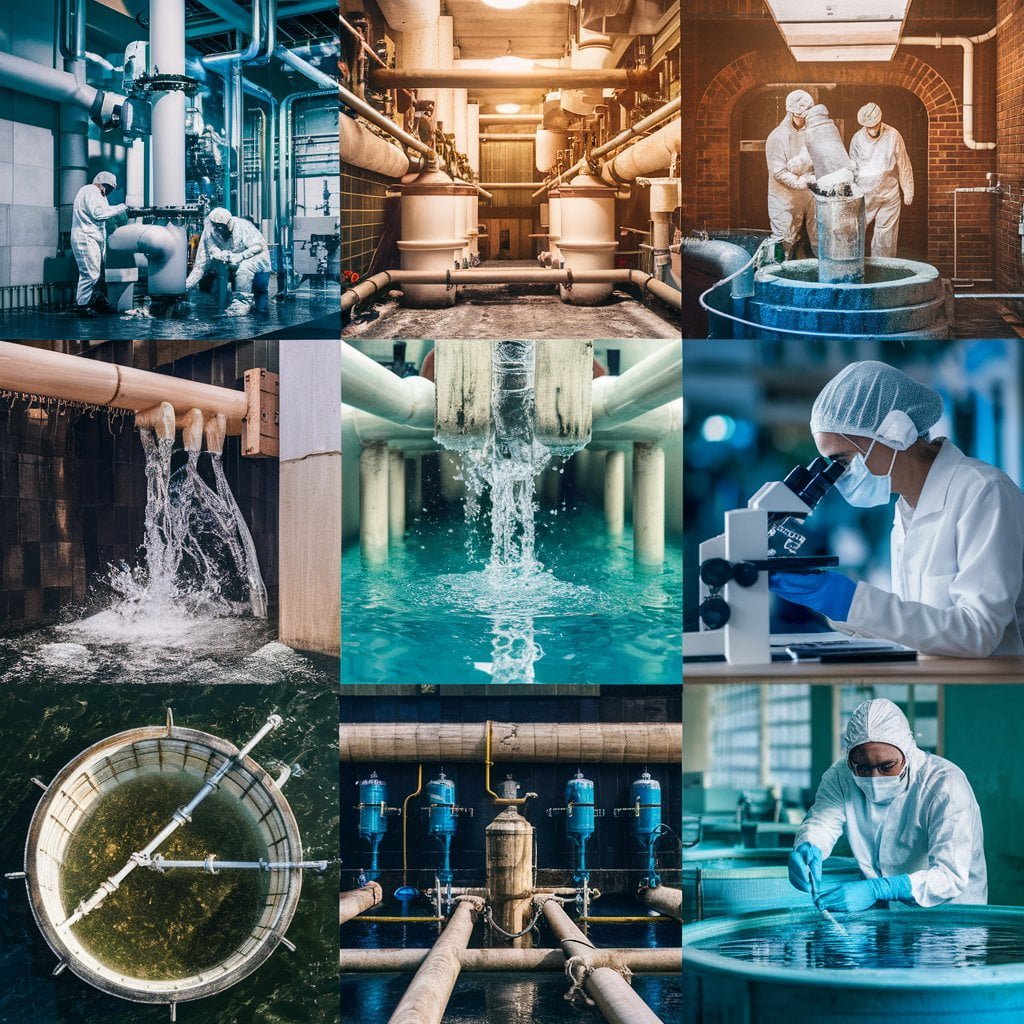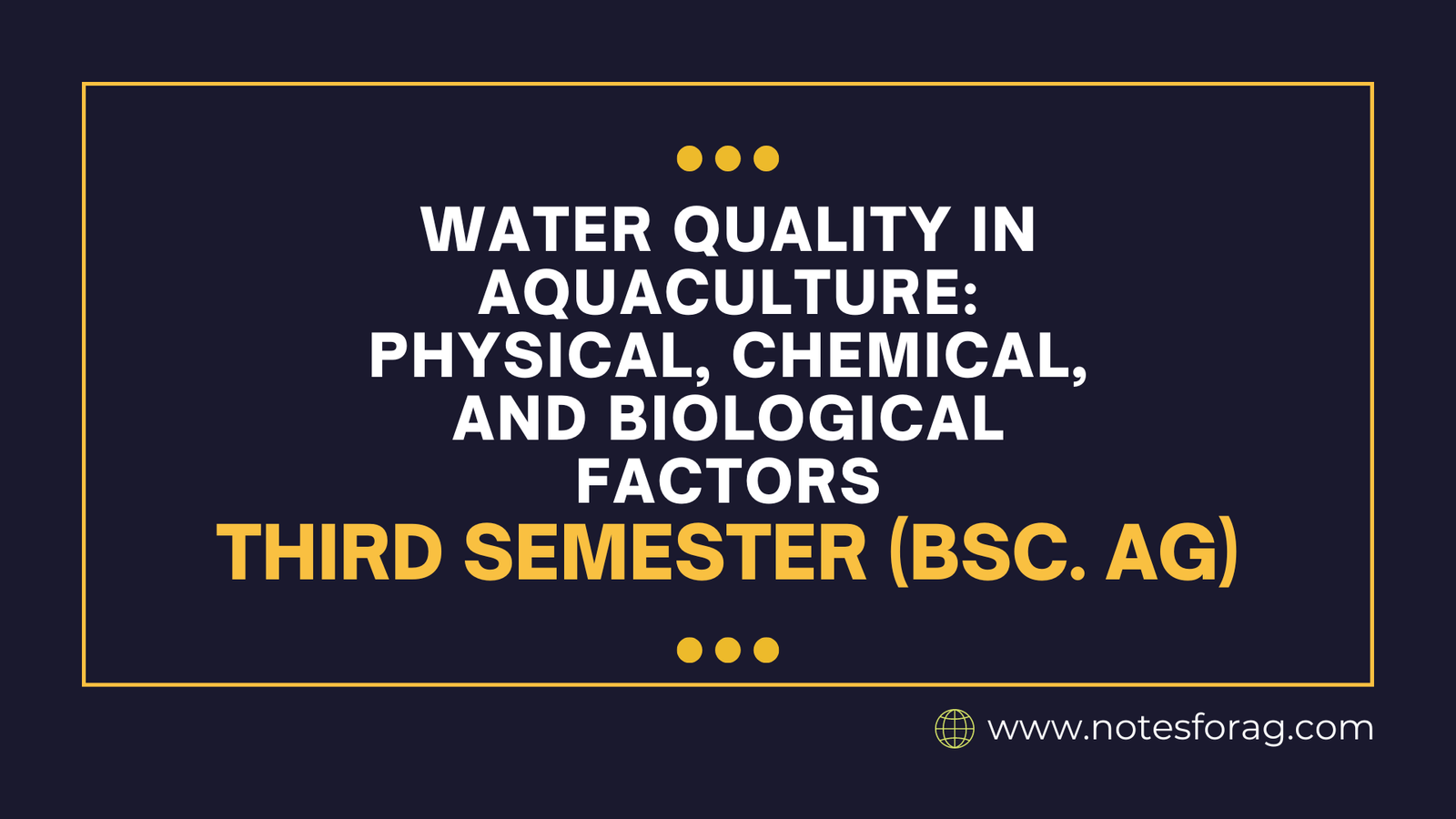Water quality management in aquaculture entails monitoring and managing critical parameters to provide a healthy habitat for aquatic creatures. Temperature and turbidity are physical characteristics that affect metabolic rates and light penetration. Chemical factors like dissolved oxygen (DO) and pH are essential for respiration and overall water chemistry balance. Biological characteristics such as plankton populations are critical to the food web and nutrient cycling. Maintaining ideal conditions for these factors is critical to the performance and sustainability of aquaculture operations.
Table of Contents
Introduction to Water Quality Management
Water quality management is an important part of environmental science and public health, with the goal of maintaining and improving water quality in a variety of habitats. Effective water quality management ensures that water bodies are safe for human consumption, agricultural use, recreational activities, and ecological balance. This complete method entails monitoring, measuring, and controlling water quality indicators in order to prevent contamination and alleviate negative impacts on health and the environment.

Water quality management relies on three types of parameters: physical, chemical, and biological. Temperature, turbidity, and color are all physical characteristics that influence the look of water and can have an impact on aquatic life. Chemical parameters comprise a wide range of components, including pH, dissolved oxygen, nutrients, heavy metals, and organic molecules. These chemical properties are critical for identifying the water’s composition and potential pollutants. Biological parameters measure the presence and concentration of microorganisms such as bacteria, viruses, algae, and protozoa, which can indicate the water’s health and safety for human consumption.
Physical Parameters
Temperature
Temperature plays a pivotal role in dictating the conditions within aquatic ecosystems. Variations in water temperature can impact dissolved oxygen levels, metabolic rates of aquatic organisms, and the solubility of various chemicals.
- Importance: Temperature influences the metabolic rates, growth, reproduction, and immunological response of aquatic species.
- Management: Maintain ideal temperature ranges for the cultured species. To avoid significant temperature variations, use heating or cooling systems and monitor them on a regular basis.
Turbidity
Turbidity, on the other hand, is an indicator of water clarity and is measured by the presence of suspended particles. High turbidity levels are often caused by a variety of sources, including soil erosion, wastewater discharge, and the presence of phytoplankton.
- Importance: Turbidity describes the cloudiness of water caused by suspended particles. High turbidity can limit light penetration, reducing photosynthesis and oxygen generation.
- Management: Reduce turbidity via limiting soil erosion, controlling feeding techniques to minimize overfeeding, and employing sedimentation tanks or filters.
Chemical Parameters
Dissolved Oxygen (DO)
Dissolved oxygen is a fundamental indicator of water health, essential for the survival of aquatic organisms. It influences the metabolic rates and the overall ecosystem productivity.
- Importance: DO is essential for respiration in fish and other aquatic creatures. Low DO levels can cause stress, impaired growth, and even death.
- Management: Ensure appropriate aeration by using mechanical aerators, water circulation, and maintaining optimal stocking densities. Monitor DO levels on a regular basis, particularly during hot weather and at night when oxygen levels can decline.
pH
pH measures the acidity or alkalinity of water, ranging from 0 (very acidic) to 14 (very alkaline), with 7 being neutral. The pH level is vital as it affects the solubility and biological availability of chemical constituents such as nutrients and heavy metals.
- Importance: pH influences the chemical structure and toxicity of many substances in water. Extreme pH values can cause stress or death in aquatic species.
- Management: Use lime or buffering chemicals to keep the pH in the appropriate range (6.5 to 9.0 for most aquaculture species). Monitor pH on a regular basis and alter water chemistry gradually to minimize unexpected changes.
Biological Parameters
Plankton
Plankton are a diverse group of organisms that live in the water column and cannot swim against the current. They are crucial biological parameters in assessing water quality, playing significant roles in aquatic ecosystems. Plankton can be broadly classified into two categories: phytoplankton and zooplankton.
- Importance: Plankton, including phytoplankton (microscopic plants) and zooplankton (microscopic animals), are essential to the aquatic food chain. They are primary producers and food sources for many cultivated species.
- Management: Promote a healthy plankton population by balancing nutrient supplies, preventing overfertilization, and ensuring sufficient light penetration. Regularly monitor plankton density and diversity to detect imbalances or dangerous algal blooms.
Water quality management in aquaculture include monitoring and regulating physical, chemical, and biological parameters in order to provide an ideal environment for aquatic creature growth and health. Maintaining appropriate temperature and turbidity, keeping enough dissolved oxygen levels and pH balance, and regulating plankton populations are all important considerations. Effective water quality management enhances the sustainability and productivity of aquaculture systems.
Frequently Asked Question(FAQ)
Why is temperature important in aquaculture?
Temperature influences the metabolic rates, growth, reproduction, and immunological responses of aquatic species. Maintaining ideal temperature ranges for various species is critical to their health and productivity.
What is dissolved oxygen (DO) and why is it important?
Dissolved oxygen (DO) is the amount of oxygen in water that aquatic organisms can breathe. Adequate DO levels are essential for respiration, development, and well health. Low DO levels can cause stress, stunt growth, and ultimately to death.
Why is pH important in aquaculture?
pH influences the chemical structure and toxicity of many substances in water. Extreme pH levels can stress or kill aquatic species, affecting their growth and reproduction.
Related Articles

